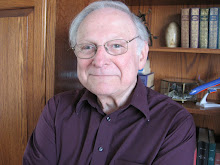What do polka dots, you ask, have to do with the lively folk dance known as the polka? Nothing at all, you might think if you recall the dreamy, un-polka-like “Polka Dots and Moonbeams,” Frank Sinatra’s first hit recording with Tommy Dorsey’s orchestra. But, as it turns out, there is a connection—tenuous, to be sure—between the dot and the dance.
Large coin-shaped spots first became popular as a pattern on fabric in Germany in the nineteenth century, and they were called Thalertupfen, which means “spots in the shape of the thaler,” a silver coin in wide circulation then. Around the same time, the dance known as the polka became a fad throughout Europe and America, and it was so popular that many unrelated products were marketed with that name, such as polka gauze, polka jackets, and polka hats. When the dotted pattern became popular in women’s clothing, the name polka was applied to it to enhance its popularity.
Coincidentally, James K. Polk was elected president of the United States in 1844, and his name with an added “a” was jestingly attached to certain products as a marketing tool, in the same way that Theodore Roosevelt later gave rise to a “teddy bear” or Ronald Reagan to “Reaganomics.”
The first known use of polka dot in print was in 1854 in a story in the Yale Literary Magazine that contained this passage: “Maybe she should wear her red chiffon with the white polka-dots. She would see how it looked anyway. Max would like it because it was bright and summery.” In 1857 the American women’s magazine Godey’s Lady’s Book referred to a “scarf of muslin, for light summer wear, surrounded by a scalloped edge, embroidered in rows of round polka dots.”
The word polka, referring to the Bohemian peasant dance in 2/4 time, has several possible origins. The word means “Polish woman” in Polish, but it might also be an alteration of the Czech word pulka, meaning “half,” in allusion to the half-step pattern. Or it could be a portmanteau word, blending two other Polish dances, the polonaise and the mazurka. However it came to be named, it gained huge popularity in the mid-1830’s in Prague and thereafter throughout the rest of the world.
The Bard of Buffalo Bayou won’t dance, don’t ask him. He will, however, recite nonsensical verses, like the following, at the top of his lungs till the cows come home.
Dancing With the Stars (of Yesteryear)
Oscar Homolka
Is great in a Polka,
And you can’t beat Blanche Yurka
When she does the Mazurka.
Alla Nazimova
Has a smooth Bossa Nova,
Likewise Zachary Scott
With a graceful Gavotte.
You’ll adore Peter Falk
In a lithe Lambeth Walk,
And Rosalind Russell
Performing the Hustle.
There’s Basie and Ella
In a swell Tarantella,
And Madeleine Kahn
With a perfect Pavane.
See gruff Gabby Hayes
Do a brisk Polonaise,
And droll Benny Hill
In a quirky Quadrille.
That Veronica Lake
Can sure Shimmy-Shake,
And demure Sally Rand
Does a grand Sarabande,
While that scamp Theda Bara
Vamps a hot Habanera,
And the great Steve McQueen
Will begin the Beguine.
But you’ll go quite berserk
When you see Billie Burke
Really get down and Twerk.

No comments:
Post a Comment